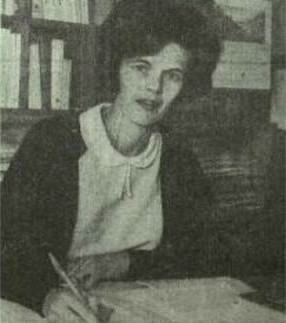Alison Harcourt facts for kids
Quick facts for kids
Alison Harcourt
|
|
|---|---|

Alison Doig in 1965
|
|
| Born |
Alison Grant Doig
24 November 1929 Colac, Victoria, Australia
|
| Nationality | Australian |
| Alma mater | University of Melbourne |
| Known for | Branch and bound algorithm |
| Spouse(s) | Richard Harcourt |
| Scientific career | |
| Fields | Statistics, linear programming |
| Institutions | London School of Economics University of Melbourne |
Alison Grant Harcourt (born 24 November 1929) is an amazing Australian mathematician and statistician. She is famous for helping to create a special computer method called the branch and bound algorithm. She did this important work while studying at the London School of Economics.
Alison also helped create the "poverty line" for Australia. This line helps measure how many people are living in poverty. She also helped make Australian elections fairer by improving how candidates are listed on ballot papers.
Contents
Early Life and School Days
Alison Doig was born in Colac, Victoria, Australia, in 1929. Her dad, Keith Doig, was a doctor and a football player. He was also a hero in World War I. Her mom, Louie Grant, came from Scotland. Louie's brother was a famous scientist named Sir Kerr Grant.
Alison went to school in Colac and then to Fintona Girls' School. After that, she went to the University of Melbourne. She earned a degree in mathematics and then another in physics. While studying for her master's degree, she came up with a new way to solve problems using "integer linear programming."
Working at the London School of Economics
Because of her great work in linear programming, Alison started working at the London School of Economics (LSE) in the late 1950s. In 1960, Alison and another mathematician, Ailsa Land, wrote a very important paper.
Their paper described the "branch and bound" algorithm. This smart method helps computers solve very difficult problems. Today, this algorithm is a key part of many modern computer programs. These programs help solve complex math problems.
Returning to the University of Melbourne
In 1963, Alison came back to Melbourne, Australia. She became a senior lecturer in statistics at the University of Melbourne.
Helping to Understand Poverty
In the mid-1960s, Alison joined a team led by Ronald Henderson. They wanted to figure out how much poverty there was in Australia. In 1973, the team created the "Henderson Poverty Line." This line showed how much money a family of two adults and two children needed to live.
Since 1979, this method has been used to regularly update Australia's poverty line. It helps people understand and track poverty in the country.
Improving Election Fairness
In 1975, after a big political event in Australia, Alison and another statistician, Malcolm Clark, noticed something odd. The way candidates were listed on election papers seemed unfair. They found that certain political parties always got the top spots.
Alison and Malcolm told a special committee about their findings. Because of their work, a new law was passed in 1984. This law made sure that candidate names were listed in a much fairer, more random way. This helped make elections more honest for everyone.
Later Life and Awards
Alison Harcourt retired from teaching at the University of Melbourne in 1994. However, she still works there part-time, helping students learn statistics.
In October 2018, Alison was named the "Senior Victorian Australian of the Year." Then, in December 2018, the University of Melbourne gave her an honorary Doctor of Science degree. This was a special award for her amazing contributions to science.
In June 2019, Alison was given another big honor. She was made an "Officer of the Order of Australia." This award recognized her "distinguished service to mathematics and computer science." It celebrated her groundbreaking research in linear programming.
See also
 In Spanish: Alison Harcourt para niños
In Spanish: Alison Harcourt para niños

